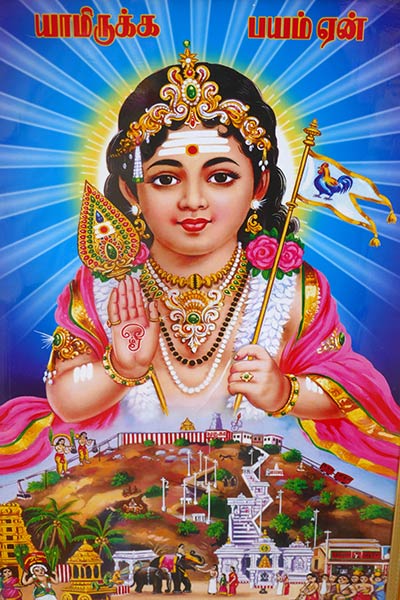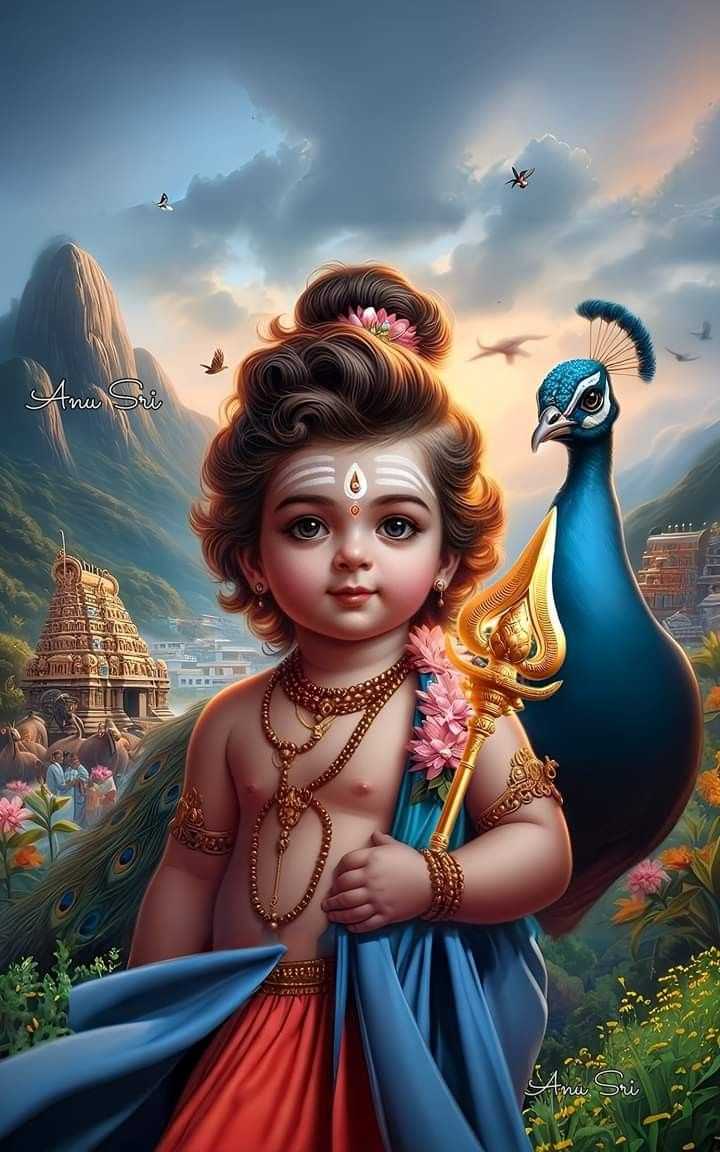Introduction:
Lord Murugan, also known as Kartikeya, Skanda, Subramanya, and Kumara, is a powerful Hindu deity revered primarily in South India, Sri Lanka, Malaysia, and among Tamil communities worldwide. He is the son of Lord Shiva and Goddess Parvati, and the younger brother of Lord Ganesha. Often depicted as a youthful and radiant warrior god, Lord Murugan symbolizes valor, wisdom, devotion, and spiritual strength.
Divine Birth and Purpose
According to Hindu mythology, Lord Murugan was born from the divine spark of Lord Shiva to destroy the evil demon Surapadma. His birth was not ordinary — it was through the third eye of Shiva, which emitted six sparks that were carried to the sacred Saravana Poigai (a divine lake). These sparks took form as six babies, who were then united by Goddess Parvati into a single being with six faces — hence the name Shanmukha or Aarumugam.
His divine mission was to restore dharma by defeating adharma (evil), making him the eternal warrior of righteousness.
Murugan’s Symbols and Mount
- Vel (Divine Spear): Gifted by his mother Parvati, the Vel is his primary weapon. It represents wisdom, protection, and the destruction of ego and ignorance.
- Peacock (Mayil Vahanam): His vehicle signifies victory over pride and the ability to rise above worldly attachments.
- Rooster (Seval Kodi): Symbolizes his triumph over demons and his command over the senses.
Names and Significance
Lord Murugan is known by many names across different regions and texts:
- Kartikeya – the one raised by the Krittika stars (Pleiades)
- Skanda – the one born of fire
- Subramanya – the auspicious one
- Shanmuga / Arumugan – the six-faced lord
- Kumara – the eternal youth
- Murugan – the Tamil name meaning “beautiful” or “youthful one”
In Tamil Nadu, he holds a unique position as the guardian deity of the Tamil people. He is celebrated in ancient Sangam literature, temple architecture, and devotional hymns.
The Six Abodes (Arupadaiveedu)
Lord Murugan is associated with six sacred temples in Tamil Nadu, each marking an important event in his life:
- Palani – where he renounced everything and stood as an ascetic
- Swamimalai – where he taught the meaning of "Om" to Lord Shiva
- Thiruchendur – where he vanquished the demon Surapadma
- Thirupparankundram – where he married Devasena
- Thiruthani – where he married Valli
- Pazhamudircholai – where he resides with both his consorts
These temples are collectively called Arupadaiveedu, and form a central part of Murugan worship.
Devotion and Festivals
One of the most powerful expressions of devotion to Lord Murugan is through Kanda Sasti Viratham, a six-day fasting and prayer festival observed in the Tamil month of Aippasi. It culminates with Soorasamharam, the reenactment of the divine battle between Murugan and the demon Surapadma.
Other major festivals include:
- Thaipusam – the day Parvati gave the Vel to Murugan
- Panguni Uthiram – his marriage festival
- Vaikasi Visakam – his birthday celebration
Conclusion
Lord Murugan is more than a warrior god — he is a spiritual guide, a symbol of youthful energy, courage, and divine knowledge. Whether you're seeking protection, strength, or wisdom, turning to Murugan opens the path to inner transformation. His mantras, temples, and sacred hymns continue to inspire millions across the world.
Om Saravana Bhava!


